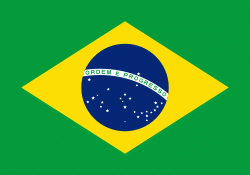Atibaia
 |
Its strawberry crops are well known. These crops are cultivated mainly by Japanese descendants, since the city was a common Japanese immigrant center.
In 1665, Jerônimo de Camargo and his expedition found a hill near a river named Tubaia (later called Atibaia River). Jerônimo de Camargo was a Bandeirante explorer. Their main objective was to search the interior lands of Brazil for rich mineral resources, such as gold, silver and emeralds in present-day state of Minas Gerais.
Camargo had his men build a chapel by the Tubaia river, which served as shelter to "tropeiros"—interior explorers on horse back—as well. The area was already occupied by Mateus Nunes da Siqueira, a priest who established contact with the Guarulhos tribe.
In June 1665, a farm was established and Father Mateus built a village with the help of enslaved natives. The village was called Atibaia.
Atibaia was a very important settlement at that time, because it was part of the route to Minas Gerais. São Paulo, probably the second most important city in Brazil at that time, was south of Atibaia, and the mining region north of it, locating Atibaia midway between those two important points.
As time passed, Atibaia became very important. Even the king of Portugal, D. João VI, visited the small town. Many famous artists lived in or visited Atibaia, such as Benedito Calixto, a famous church fresco painter. The city boasts two of his paintings. Alberto Santos-Dumont, the father of aviation, also visited Atibaia.
In April 1864, Atibaia was officially promoted to the status of city, due to the increased size of its population.
An important thoroughfare that divides the city is now called Avenida Jerônimo de Camargo.
The correct denomination for the native people is "atibaiano"; "atibaiense" is the nomination for those who live there but weren't born in the city.
Map - Atibaia
Map
Country - Brazil
Currency / Language
| ISO | Currency | Symbol | Significant figures |
|---|---|---|---|
| BRL | Brazilian real | R$ | 2 |
| ISO | Language |
|---|---|
| EN | English language |
| FR | French language |
| PT | Portuguese language |
| ES | Spanish language |


















